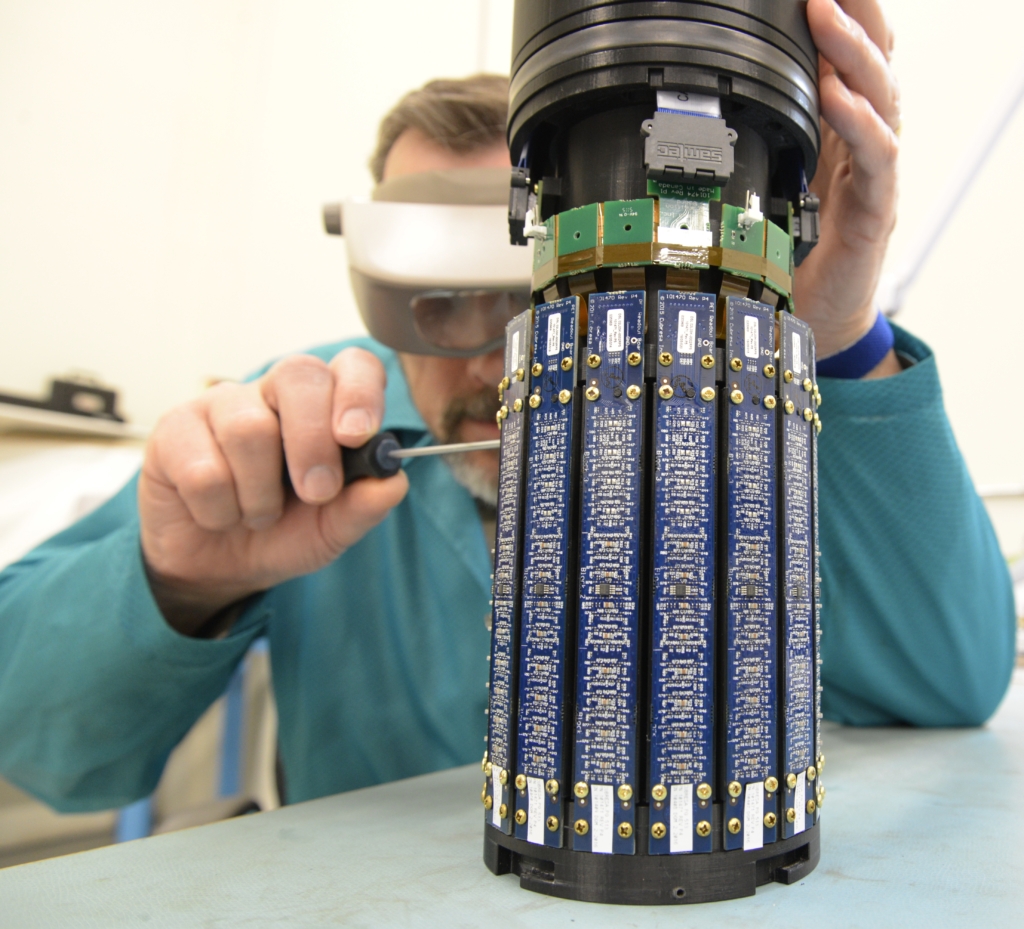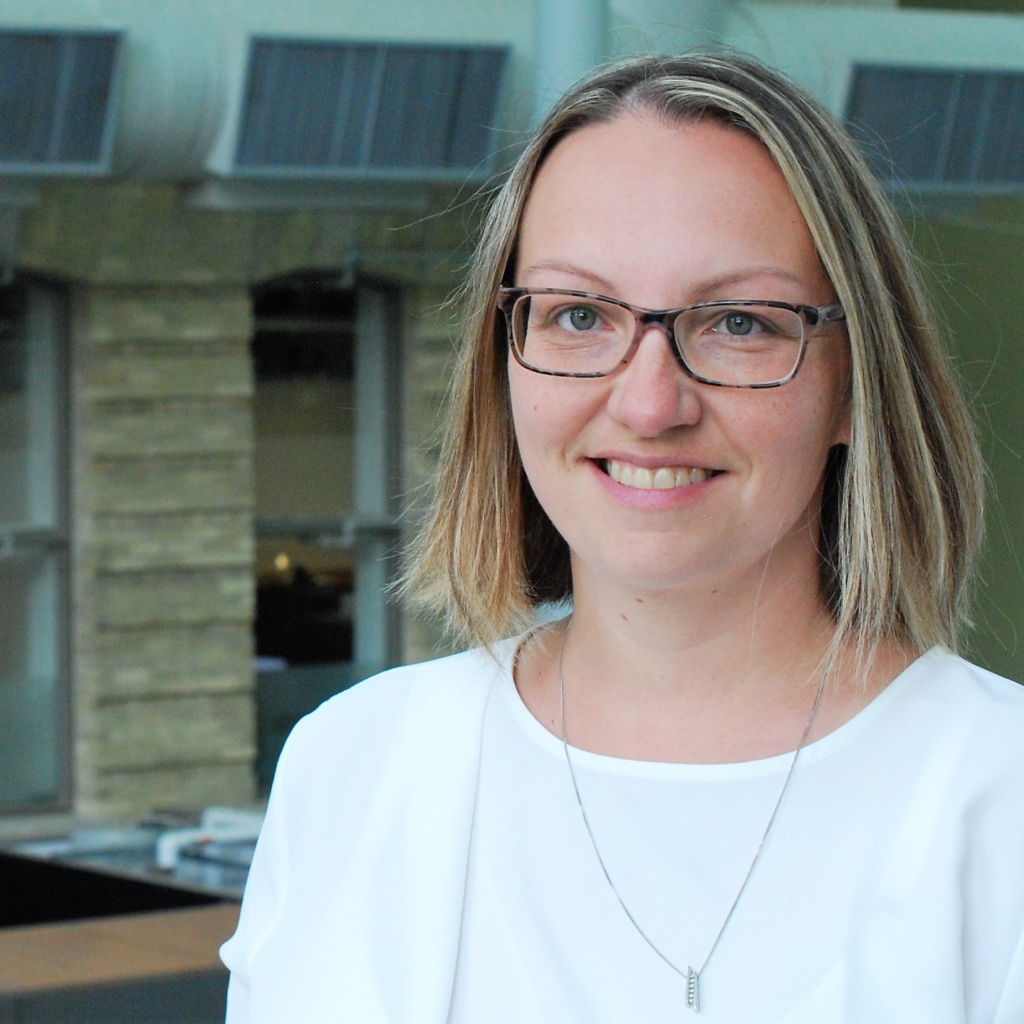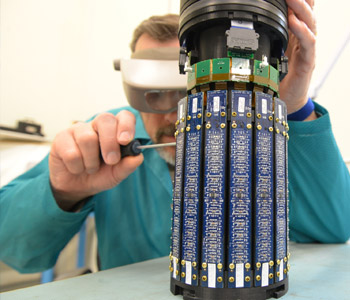Written by: Brian Cole

Four months ago, Research Manitoba made a number of strategic investments in several local companies as part of the province’s bid to tackle the novel coronavirus that causes COVID-19.
Now, it looks like the first of those investments are about to pay off.
Adva Diagnostics Inc. and Cubresa Inc. have confirmed they are on the verge of unveiling new products that can be used to help combat the disease, which has killed 1.86 million people around the world, including 16,187 in Canada and 688 in Manitoba, as of Jan. 5.
Both firms received funding from Research Manitoba’s COVID-19 Innovation Proof of Concept (IPoC) program. The initiative is supported through a $5 million research fund launched last year as part of the province’s overall response to the global public health threat.
In the case of Adva, the company received $150,000 to support the development of a revolutionary rapid spot test that can detect infectious viruses in humans and animals. The test is expected to be available within the first six months of 2021.
Cubresa, meanwhile, received $100,000 to help support development of a prototype for a positron emission tomography (PET) imaging tool that can be used with a magnetic resonance imaging (MRI) machine or alone to provide detailed scans of the virus in lab animals. The prototype is set to be tested at the IWK Health Clinic in Halifax in February.
In both cases, the products will be the first of their kind, a testament to the innovation and creativity that can be found in Manitoba’s medical technology sector.
Jennifer Cleary is the Manager of Programs for Research Manitoba and the person who oversees the IPoC program. She says the organization is pleased to see investments made under IPoC are starting to pay off in terms of new tools to fight COVID-19, adding that she expects more announcements to come in the near future.
“It (IPoC) was really to help a company move their innovation or discovery forward so that it can be used for the greater good,” she says.
Which is where Adva and Cubresa come in.
Both companies were working on ideas for new products prior to the emergence of COVID-19, which is caused by the novel coronavirus known as SARS-CoV-2. And both were able to quickly change direction when the call went out for products to help battle the disease, says Cleary.
“Our Manitoba-based companies were able to quickly pivot from what they were doing to support the response in a variety of ways,” she says. “And our funds really helped them to do that, to get their products from the lab into the world, whether it was to help hire folks to come in and help, or whether it was to help get the supplies they needed, or supporting efforts to get Health Canada approval.”

John Pacak, co-founder of Adva, agrees, noting that funding from Research Manitoba played an important role in the development of his company’s new rapid spot test.
Most tests for the virus are based on a technique known as reverse transcription polymerase chain reaction (RT-PCR). This involves taking a swab of genetic material from the nose and mixing it with various chemicals, known as reagents, to extract RNA. More chemicals are then used to amplify any traces of viral material in the sample.
Adva’s new testing system is different in that it is based on spectral technology.
As Pacak explains, all biological materials produce patterns of electromagnetic radiation that can be measured with a device called a spectrometer. The challenge is to build a spectrometer capable of measuring the particular pattern of electromagnetic radiation or “signature” associated with SARS-CoV-2, or any other virus or bacteria for that matter.
Adva is doing just that.
“Essentially, we are exposing the virus to electromagnetic radiation and measuring the resulting spectrum. We then compare the spectrum to our database of ‘spectral fingerprints,’” says Pacak, noting that the product is supported by 14 patents in 24 countries.
A major feature of the new system is that it can analyze samples for multiple infections at the same time. As a result, it will be able to determine whether a sample is COVID positive, COVID negative or ‘other,’ meaning an infectious disease other than COVID-19 is present.
“The exact diagnosis of what the other infectious disease is will become known as our database of infectious disease signatures grows,” says Pacak.
The system’s database can also be continually updated. This means it will be able to recognize a new strain of SARS-CoV-2 or the infectious agent of a new pandemic in hours or days rather than the weeks or months required with a conventional chemistry test, says Pacak.
Moreover, data acquired by Adva’s system can be re-analyzed as new spectral signatures are added to the database, allowing for the retroactive identification of novel pathogens in prior samples that weren’t yet discovered at the time of the initial measurement.
“The Adva system will be a very useful tool for microbiology research leading to new discoveries world-wide,” says Pacak, who specializes in bio-medical engineering. “We’re very proud of what we are doing here. It is very exciting.”

In addition to its diagnostic benefits, Pacak says the Adva system will also be faster. The problem with the current system of testing, he says, is that it takes too long to analyze the samples — usually about 15 minutes to load and analyze one sample.
With Adva’s system, it will be possible to analyze as many as 384 samples simultaneously in five minutes. “The system is designed to be highly scalable and the number of samples can be adjusted based on the requirements (one to 384 samples at a time) and more systems can be combined for even greater testing capacity.” he says.
In addition to being faster, Adva’s system will also be less invasive (it uses cheek swabs instead of nose swabs) and cheaper over time because the machine used to analyze the samples does not use chemicals, which can be expensive and in short supply.
Add it all up, and you have a rapid test that is more effective, efficient and accessible than those on the market today.
“You can take a cheek swab when you arrive at work or school. Take the test on the way in and you’ll have your results in a few minutes, and you’ll know who specifically is infected,” says Pacak. “Testing of all passengers before flights and upon arrival would also be possible using our system.”
In addition to the $150,000 from Research Manitoba, Adva, which is a subsidiary of Winnipeg-based InnovoXL, also received $112,500 from Mitacs, a national not-for-profit organization that supports Canadian research and innovation.
As well as supporting the development of the rapid test, the IPoC funding also provided validation for the product, which will be helpful in attracting the private investment that will be needed to ensure the product can be brought to market.
“We’re very grateful that Research Manitoba and the province of Manitoba chose to support us in that way,” he says.
As he explains, no one really knew early on how the pandemic would play out and what impact it might have on private capital for various projects, including their rapid spot test.
“From a business and investment perspective there was a lot of fear in the marketplace,” he says. “The question of how you raise money for new technology during a pandemic was a real concern at the time. So when you have government organizations like Research Manitoba and Mitacs step up and make an investment, it is a very good signal. It reduces the perceived risk for other investors.”
While some components of the testing system being developed by Adva are sourced from abroad, others are manufactured here in Winnipeg. “Some components are so sophisticated there are only three companies world-wide that can produce them,” he says.
Nonetheless, the company has recently acquired a 50,000 square foot manufacturing facility with several computer numerical control machines (an automated technology used for manufacturing high-precision parts directly from digital files), and plans to do as much production as possible in Winnipeg.
“We have started developing our own proprietary advanced manufacturing processes and plan to produce some of our optical components, which isn’t happening locally right now,” he says.
Looking ahead, Pacak says Adva, which currently employs about 15 people, could have as many as 50 employees in a year from now, and possibly as many as 300 a year after that.
Meanwhile, over at Cubresa, the company’s 15 employees are putting the finishing touches on a prototype for a new product that is actually based on existing technology.
The company is a world leader in the development and manufacture of PET inserts, according to Lisa Bako, Director of Marketing for Cubresa. As the name suggests, a PET insert is a relatively small device (weighing about 10 pounds) that can be placed into a much larger pre-clinical MRI machine (which can weigh as much as 1,200 pounds). Cubresa is the only company in the world that builds PET inserts that are made to fit an existing lab MRI machine.
Pre-clinical MRI scans are used by researchers to study the organs and internal structures of small lab animals such as mice. A PET scan is different in that it provides images of a lab animal’s organs and internal structures at the molecular level. By combining the two platforms, researchers get the best of both worlds.
“What it allows (researchers) to do is image PET and MRI at the same time, which gives them some unique information which they can’t get if they were doing it MRI-only or sequentially, meaning one (MRI) after the other (PET),” says Bako.
A first, it was not clear what role Cubresa could play in the COVID-19 response.
“Infectious diseases was not an area we had been involved with in the past,” says Bako.

“Obviously, they (researchers) are not just handling animals, they are handling infected animals. And that posed an interesting challenge.”
Cubresa took its existing PET insert (known as the NuPET insert) and started looking for ways to make it more suitable for a level three bio-safety lab (BSL 3), which is where COVID-19 research is carried out. That involved developing a special casing to cover ports and other open areas within the device, protecting it from various sanitizing agents that are used to clean bio-safety labs. The device’s animal bed has also been covered to reduce the risk of cross-contamination within the lab.
“It’s all encased, so when the animal breathes, it’s not (releasing virus particles) into the open room,” says Bako.
Another benefit of Cubresa’s PET insert is its size. As it turns out, many bio-safety labs are on the smaller side, and researchers have expressed interest in using the PET insert alone because it is relatively compact compared to an MRI or a stand-alone PET scanner.
“Most of those labs do not have MRIs in them. So our device (called the NuPET Bio) is going to be used as a stand-alone tool. Our device is very small. It’s lightweight, it’s portable, which is of interest to infectious disease labs, because you can set it up, use it for imaging, and then you can put it away.”
Bako says the financial support from Research Manitoba was important because developing new products, particularly during a pandemic, always carries certain risks.
“This support was integral and allows us to proceed with the prototype version of the new system” which is designed and built in Winnipeg.
The company also received a $550,000 award from Innovative Solutions Canada. That money, along with financial support from the Public Health Agency of Canada, will be used to support the testing of the prototype at the IWK Heath Clinic in Halifax.
“They (IWK Health Clinic) have a NuPET system already, so they are familiar with our technology,” says Bako. “They are ramping up their BSL 3 facility now, and we are excited at the thought of using our NuPET Bio system within that new bio-safety environment.”
Bako says researchers will be able to use the NuPET Bio insert to explore any number of questions related to COVID-19, including why the disease appears to affect some people more than others and what can be done to make therapies more effective.
“These are all potential areas of interest. And there are so many researchers around the world right now looking at different aspects of COVID.”
Just as important, researchers will be able to use the NuPET Bio to carry out research on any number of viruses that may emerge in the years ahead.
“The use of imaging in virus and bacteria research is a new and growing market, so this is an opportunity for Cubresa to… provide a tool that is of value, not just today, but also tomorrow,” says Bako.
Brian Cole is a Winnipeg writer.

